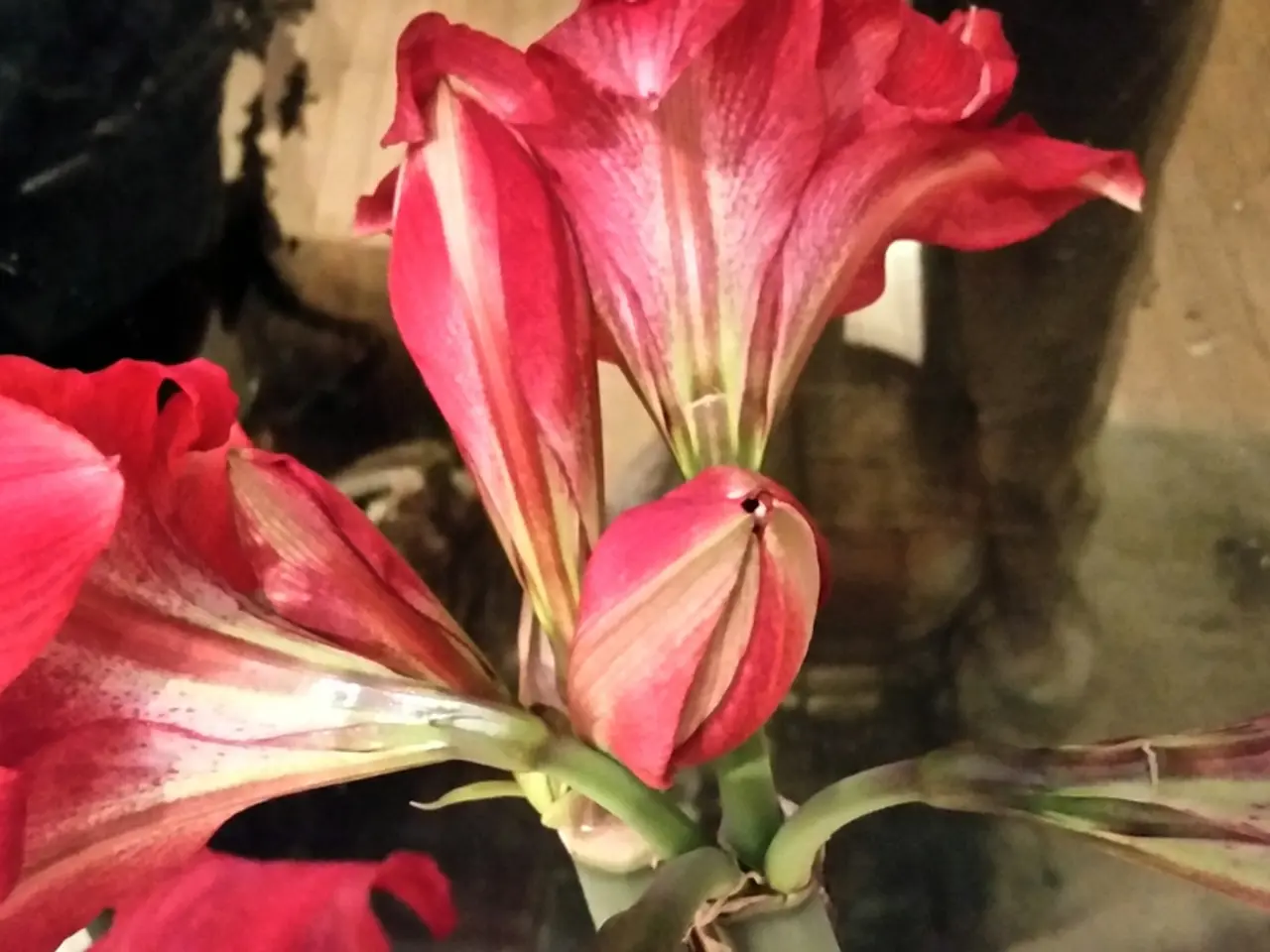Maintaining April Bulbs for Longer Blooms: Tips for Prolonging Spring Flower Display
Blossoming spring bulbs, like the cheery daffodils and tulips, are the shining stars after a long winter's slumber. But while these flowers bring a burst of color to your garden, they can vanish just as quickly if not taken care of properly, especially in April when they're working hard to complete their bloom cycle. Here's how to make sure they keep shining for longer and come back stronger next year.
April TLC for Your Spring Bulbs: Why It Matters
April is when to give your bulbs some TLC. The energy they spend on blooming now sets the stage for future seasons. Neglecting them now could mean fewer, smaller, or less vibrant blooms in the future. With a bit of effort, you can enjoy longer-lasting flowers and healthier bulbs overall.
Extend Your Spring Blooms: Top Tips for April Bulb Care
1. Deadhead promptly: Say goodbye to spent blooms by cutting them off just below the base. This prevents the plant from channeling energy into seed production and redirects it back into strengthening the bulb.
2. Leave the foliage be: Wait until the leaves turn yellow and wither naturally before cutting them back. The green foliage is photosynthesizing, producing food for the bulb to replenish itself for next year.
3. Water wisely: Spring bulbs don't usually need extra water in April, but a deep watering every 7-10 days during a dry spell supports healthy growth. Remember to water at the base of the plants to avoid promoting fungal issues.
4. Feed for the future: A post-bloom feeding with a balanced, slow-release bulb fertilizer or a low-nitrogen fertilizer (like 5-10-10) helps the bulbs store energy for next year's blooms.
5. Mulch to maintain moisture: A light layer of organic mulch (shredded bark or compost) helps regulate soil temperature, retain moisture, and suppress weeds. Alternatively, you can use ECOgardener landscape fabric.
6. Support tall flowers: Taller flowers like tulips and alliums can topple over in windy weather. Use stakes or flower supports to keep them looking great.
7. Control pests and disease: Bulbs may attract deer, rabbits, squirrels, or be susceptible to fungal diseases. Consider using repellents, fencing, or companion planting with less palatable plants like daffodils or alliums.
8. Mark and map bulb locations: Mark where bulbs are planted to avoid accidentally digging them up during summer planting or gardening activities.
Preparing for the Next Season
Caring for spring bulbs in April doesn't just benefit your garden this season; it also lays the groundwork for future blooms. Once the foliage has naturally died back, consider dividing overcrowded bulbs, replanting or storing certain bulbs like tulips and hyacinths, and planning succession planting with other perennials and annuals.
Embrace the Spring
Get out there and give those bulbs some love! Extend their beauty, nourish future growth, and create a more colorful and vibrant garden. You (and your future bulbs) will thank yourself for it!
Enrichment Data- Layer Bulbs with Different Bloom Times: Plant different varieties that bloom at different times for a continuous display of colors from February to May.
- Proper Planting Depth and Spacing: Plant bulbs about 6 inches deep and in groups for a more dramatic effect and proper air circulation.
- Monitor Moisture During Storage: Keep stored bulbs' sawdust or moss slightly damp and check occasionally during storage.
- Provide Adequate Sunlight: Most spring bulbs thrive best in locations with full sun or partial shade.
- Fertilize and Amend Soil: Add compost or bulb fertilizer before planting and mid-season to support healthy growth.
- Deadhead and Remove Seed Pods: After flowering, remove spent flowers and seed pods to redirect energy to the bulb for nutrient storage.
- Replant Bulbs in Fall: Lifting bulbs and replanting at the correct time ensures healthy bulbs and robust blooms the following spring.
- Avoid Ethylene Gas Exposure for Certain Bulbs: Keep hyacinth bulbs away from fruits like apples that emit ethylene gas, which can damage the bulbs and impede flowering.
1. Maintaining a Vibrant Home-and-Garden Lifestyle: Aim for a continuous display of spring colors by planting bulbs with different bloom times, ensuring a bloom period from February to May.
2. Nurturing Your Bulbs Beyond April: Incorporate proper planting depth and spacing, monitor moisture during storage, provide adequate sunlight, fertilize and amend soil, deadhead and remove seed pods, and replant bulbs in fall to prepare for a robust bloom in the following spring.




